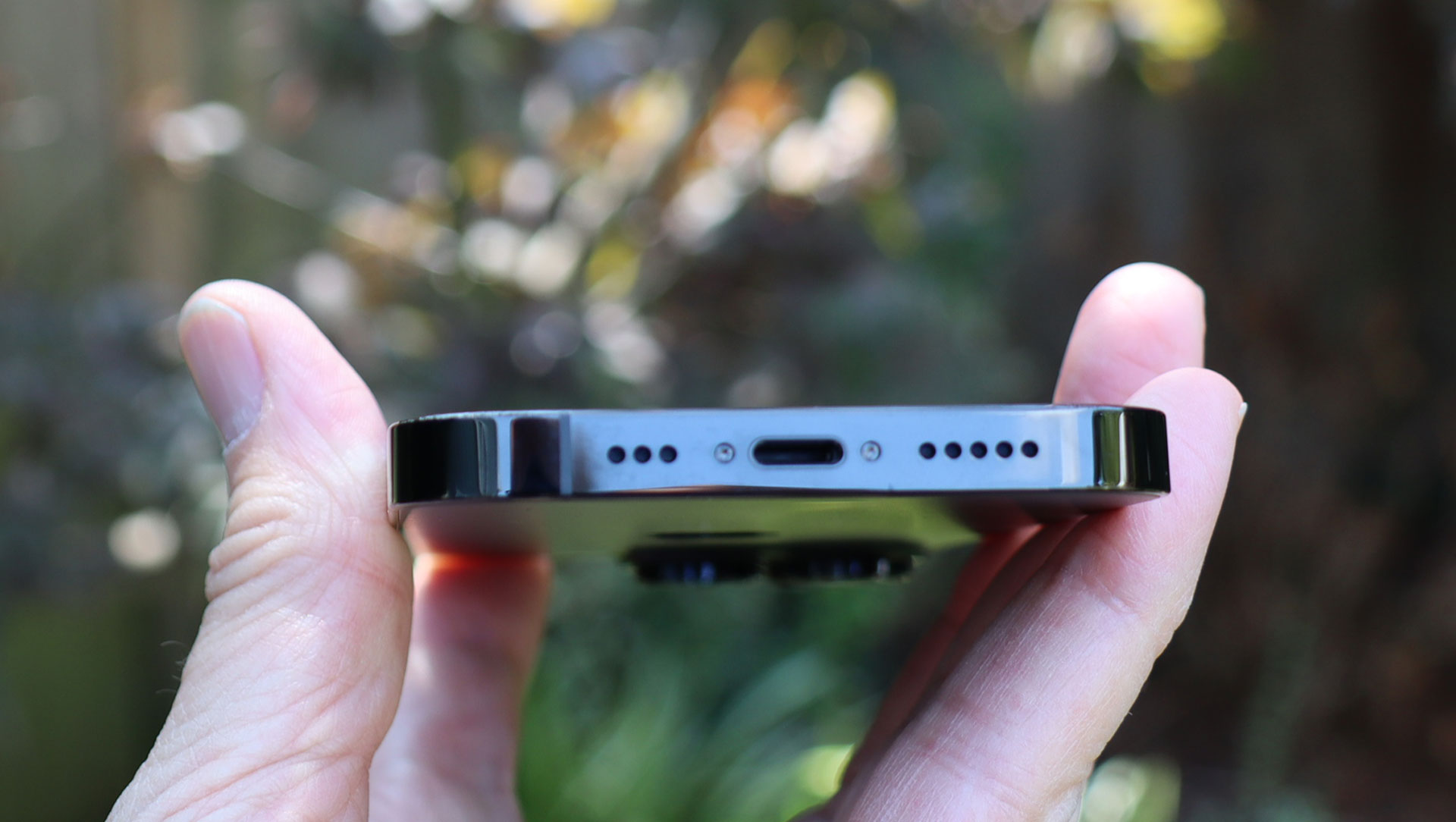iPhone 15 Pro could get USB-C and offer vastly higher data transfer speeds
A data speed division?

We’ve known for a while that Apple will be switching to USB-C for future iPhones, but we don’t know for sure if that change will happen in time for the iPhone 15. Now though, a reputable source has said that it will, and that this switch will also lead to higher data transfer speeds – at least for some models.
According to Ming-Chi Kuo – an analyst with a good track record for Apple information – the entire iPhone 15 line will have a USB-C port instead of a Lightning port. However, Kuo claims that only the iPhone 15 Pro and iPhone 15 Pro Max will take advantage of the extra speed potential of USB-C.
Those two phones will reportedly support either USB-C 3.2 data transfer speeds, which can reach 20Gbps, or Thunderbolt 3 speeds, which can get as high as 40Gbps.
The standard iPhone 15 and the iPhone 15 Plus, though, will apparently be stuck at USB 2.0 speeds of just 480Mbps, which is the same as Lightning. So if Kuo is right, one of the main advantages of switching to USB-C will be reserved for the pricier Pro models.
As ever with leaks, we’d take this with a pinch of salt, but speed aside, a switch to USB-C looks likely. The EU has mandated that Apple must make the change by 2024, and Apple itself has confirmed that it intends to comply. So it’s just a question of timing, but there seems little point in Apple delaying, and Kuo is a credible source.
The varying data transfer speeds is something we’re less sure of, but it would make sense as another way to differentiate the top-end iPhones from the lower-end models, and Apple has taken a similar approach with its various iPad lines.

Analysis: pro-level speeds for Pro devices
Increasing the data transfer speed from 480Mbps to 20Gbps or 40Gbps might sound like overkill, and for a lot of people it will be. But these massively higher speeds would be extremely useful for some users in particular cases.
Get daily insight, inspiration and deals in your inbox
Sign up for breaking news, reviews, opinion, top tech deals, and more.
One key example is 4K video. Current iPhones are capable of shooting in 4K, but the file sizes that 4K footage produce can mean it takes a long, long time to transfer the footage from your phone to your computer or other device.
If you’re a mobile movie maker who captures a lot of footage, then the problem becomes even bigger. Of course, not everyone will be doing that, but there are lots of other types of large file that you might want to transfer, and whatever you’re transferring, that extra speed will enable you to do it a whole lot faster.
For more typical users, though, the slower speeds of USB 2.0 should still be adequate, so this upgrade won’t necessarily be a reason to shell out on one of the very best iPhones.
James is a freelance phones, tablets and wearables writer and sub-editor at TechRadar. He has a love for everything ‘smart’, from watches to lights, and can often be found arguing with AI assistants or drowning in the latest apps. James also contributes to 3G.co.uk, 4G.co.uk and 5G.co.uk and has written for T3, Digital Camera World, Clarity Media and others, with work on the web, in print and on TV.